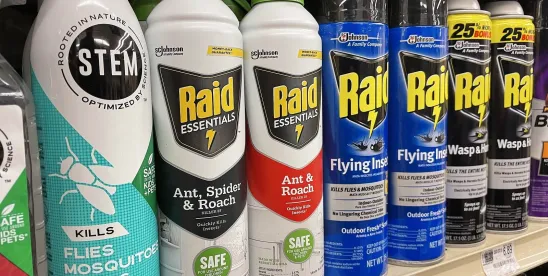when it assesses the potential for exposure to pesticide drift when it reviews new active ingredient pesticide registrations or makes decisions on new use directions for existing pesticide registrations. EPA states it will review potential exposure to drift earlier in the review process.
Historically, EPA has only conducted a chemical-specific assessment of the potential for people to be exposed to pesticide spray drift during registration review, which happens every 15 years after a pesticide is approved to ensure that it can carry out its intended functions without creating unreasonable adverse effects to human health and the environment. EPA states it will now also complete a chemical-specific spray drift analysis during the initial registration process or the review process for new and amended uses of existing products, to ensure that any needed protections are put in place from the beginning of the pesticide’s use, rather than delaying them for 15 years. According to EPA, this change is consistent with its commitment to address environmental justice concerns from pesticide use in and around farm communities and to comply with the Endangered Species Act (ESA), where EPA is working to improve how it evaluates risk to and protects endangered species.
EPA states it will use chemical-specific human health spray drift analyses to determine specific label instructions to protect against and reduce the occurrence of spray drift, such as droplet sizes and buffer distances, for each pesticide and use. Additionally, EPA notes that if it identifies spray drift risks for people living or working nearby or non-target species, EPA will protect against those risks.
EPA will now include a chemical-specific human health spray drift analysis for the following:
- New active ingredients: Any new submissions for domestic uses of new active ingredients;
- New uses and amended uses: Any new use and amended use registration submissions where that active ingredient has previously received a chemical-specific spray drift analysis; and
- Currently pending registrations: Registration actions that are currently under review with EPA, when possible.
For additional information on how EPA will implement this change, see Implementing Chemical Specific Human Health Spray Drift Analysis into Pesticide Registration Actions, July 2024. For information on the methodology for conducting human health quantitative spray drift analysis, see Residential Exposure Assessment Standard Operating Procedures Addenda 1: Consideration of Spray Drift. Additional information is also available at EPA-HQ-OPP-2013-0676.
Commentary
This announcement reflects the Administration’s continued emphasis on environmental justice considerations as part of EPA’s overall mission and program objectives. Pesticide assessments have included consideration of bystander risks from pesticide application for years; this announcement makes such considerations more explicit and prioritized. It is also not surprising that the announcement comes in an election year given campaign emphasis on the broad theme of how the Administration has “kept its promises.” The pesticide program has often taken action about such risks more frequently than “every 15 years” (the registration review cycle), but this announcement makes such considerations more routine as the program goes about its reviews. EPA has insisted throughout its history that if excessive or otherwise “unreasonable” risks are discovered at any time, the statute requires EPA to act; the emphasis here is to ensure that discovery of any such risks would more likely be identified and dealt with earlier in the typical life cycle of a pesticide.
After a new pesticide is first brought to market, new uses are added, formulations change, and over time, additional registrants may enter the market for the same active ingredient. Each registration is individually reviewed and must meet the Federal Insecticide, Fungicide, and Rodenticide Act (FIFRA) statutory requirements. This announcement would suggest that some or all of these new uses or formulation changes may receive additional scrutiny, although any associated decision deadlines under Pesticide Registration Improvement Act of 2022 (PRIA 5) will not change.




 />i
/>i

